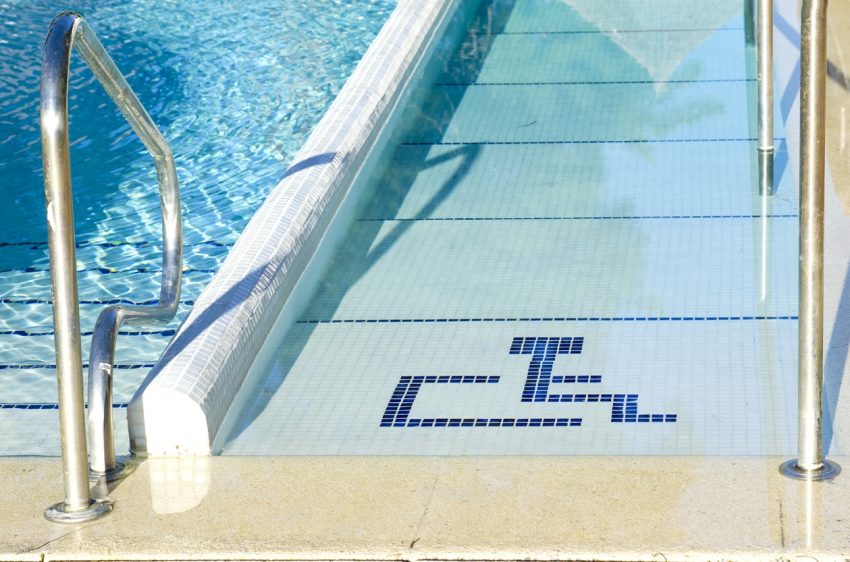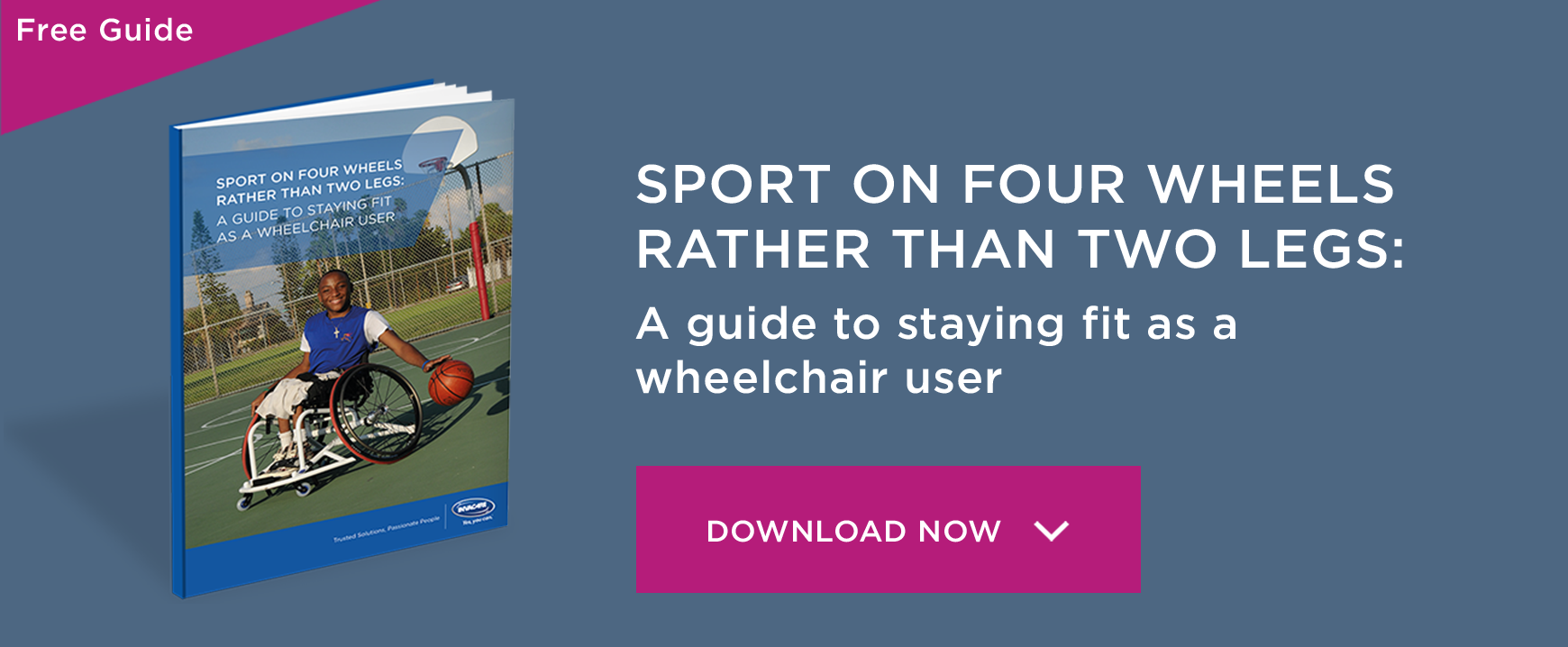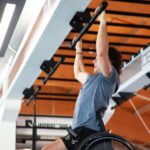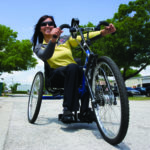Adaptive Swimming: From Hydrotherapy to the Paralympic Games

Swimming is a fantastic way to improve an individual’s core strength and endurance, whilst increasing confidence, and leading to a healthier lifestyle. The exact same can be said for adaptive swimming, designed to help those living with a disability to enjoy the wonders of the water.
For a long time Hydrotherapy has been considered a welcome opportunity for those with a disability to get into the water and enjoy some aqua therapy. The freedom of movement that being submerged in water provides is perfectly conducive for gentle stretching, exercise, and core strength improvement.
But what comes after the likes of Hydrotherapy? How can a disabled person who likes spending time in the water take things to the next level? Well one way they can achieve this is by exploring the world of adaptive swimming. Not only can adaptive swimming be enjoyed as a casual pastime, but it can also be taken even further, culminating in competitive swimming even being included in the Paralympic games.
A word of caution though before we continue, adaptive swimming – as with any other new sport you’re thinking about trying – requires an element of physicality, and it is important to check with your doctor before engaging in any brand new activities such as this. Your doctor will be best placed to give advice on the sports which they feel are more appropriate for you and your personal condition.
To get a more overall perspective on the joys of disability swimming, why not check out this article,which will give you general information on the topic. However, if you’d like to find out more about the competitive side of disability (adaptive) swimming then here are some answers to the most popular questions surrounding the sport.
What Is Required For Adaptive Swimming?
One of the best parts about adaptive swimming is that there are no special devices needed. The only thing necessary is your body. Adaptive swimming is a Paralympic sport and has been part of the program since their inception. It has always been one of the most popular Paralympic sports.
This is mostly because it was already a popular adaptive sport before the Paralympics started. Needing no special equipment, swimming was one of the first and easiest sports for wheelchair users to begin to participate in.
In short, the only thing required for adaptive swimming is the ability to actually swim! Once you’ve mastered that, you’re good to go and can start taking swimming more seriously – at whatever level you wish.
Who can participate in adaptive swimming?
Paralympic swimming is an event open to almost all abilities. Some of the participants include people with physical disabilities like visual impairment, cerebral palsy, spinal cord injury, dwarfism or amputation. People with cognitive impairments can also participate. This inclusiveness makes swimming one of the most accessible Paralympic sports. As long as you can swim unaided, you’re able to participate.
How do I get started with adaptive swimming?
While you could just go to your local pool and start swimming on your own, a good way to train for swimming competitively is to join a swimming club. You may be able to find a club that offers trainers that are experienced in adaptive sports.
Once you build up the speed and stamina to compete in the 15-meter race, you are eligible to attend an Emerging Swimmer meet. This is where you show your skills to the Paralympic Committee. The committee then classifies you into a swimming range. Once you’re classified and the Paralympic Committee are aware of you, you’ll possibly be selected for trials and qualification competitions in the future.
How often do I need to practice adaptive swimming?
As with anything in life, the more practice, the better. If you are interested in taking your adaptive swimming beyond hydrotherapy and working toward the Paralympics, you must want to practice as much as possible. The people who become really good at the sport are those who love it.
Make a regular practice schedule for yourself that includes time with a club or team as well as practice time by yourself. But make sure that your workouts are enjoyable, or you may start to see it as a chore.
Do I have to compete on a Paralympic level in adaptive swimming?
Absolutely not! As with any sport – competitive, or otherwise – you can take things at your own pace, and do what feels right for you. If you are talented enough, and spotted by coaches, you may be asked to consider joining a swimming team – including the possibility of joining a national team competing at a Paralympic level, but whether or not you choose to pursue this avenue is totally your decision.
If competing at the very top isn’t something you’re hoping to achieve, then you could also just get involved with local swimming meets – which often do not require any form of classification.
Why might adaptive swimming be the perfect sport for you?
For some people getting involved with sports and leisure activities is a brilliant way to interact with others, help social mobility, and fight against isolation. With this, it’s true to say that a large proportion of people may enjoy the prospect of team sports, rather than an individual discipline like adaptive swimming. However, there are still a lot of people, including yourself perhaps if you’re reading this, who perform better on their own and would therefore benefit from a more individualistic sport such as adaptive swimming.
The beauty of adaptive swimming is that you don’t need a large group of people to practice or participate. You can train on your own, at your local swimming pool, doing lengths and timing yourself. There’s also the opportunity to work one-on-one with a swimming coach – in a bid to help you improve your swimming form and to find ways in which to better yourself in the pool – not least from an adaptive swimming perspective. Adaptive swimming is also low maintenance. There’s no expensive equipment to buy such as there is in other disability sports, like wheelchair basketball, or archery for example.
Finally, as mentioned before, not only is adaptive swimming a brilliant form of non-invasive exercise, but being in the pool can often be extremely therapeutic, and may even help combat against chronic pain through regular stretching and gentle movements in the water.
Getting Started With Adaptive Swimming
Now that we’ve answered these questions, you may be ready to get involved in adaptive swimming. To get more information on Paralympic swimming and to contact someone who may be able to help you find a swimming club near you, check out the webpage for World Para Swimming. If you’re in the UK you can also check out swimming.org to find out where your nearest swimming pool is and whether or not they can cater for adaptive swimming in terms of overall disability access at the venue. It also includes video interviews with the athletes as well as a listing of the world records for each event. If you are serious about becoming a competitive swimmer, it’s good to know what you are up against!
If you’d like to find out more about your own country’s Paralympic committee, and ask questions about how to get involved with sports that you have an interest in, then check out the National Paralympic Committee’s page on the Paralympic website. From there you can click through on your respective country’s flag and find out more information, as well as relevant contact details.
And if you have some time to check out any videos, YouTube has plenty of footage of Paralympic swimming events. The Summer Paralympics are held every four years in various locations around the world.








